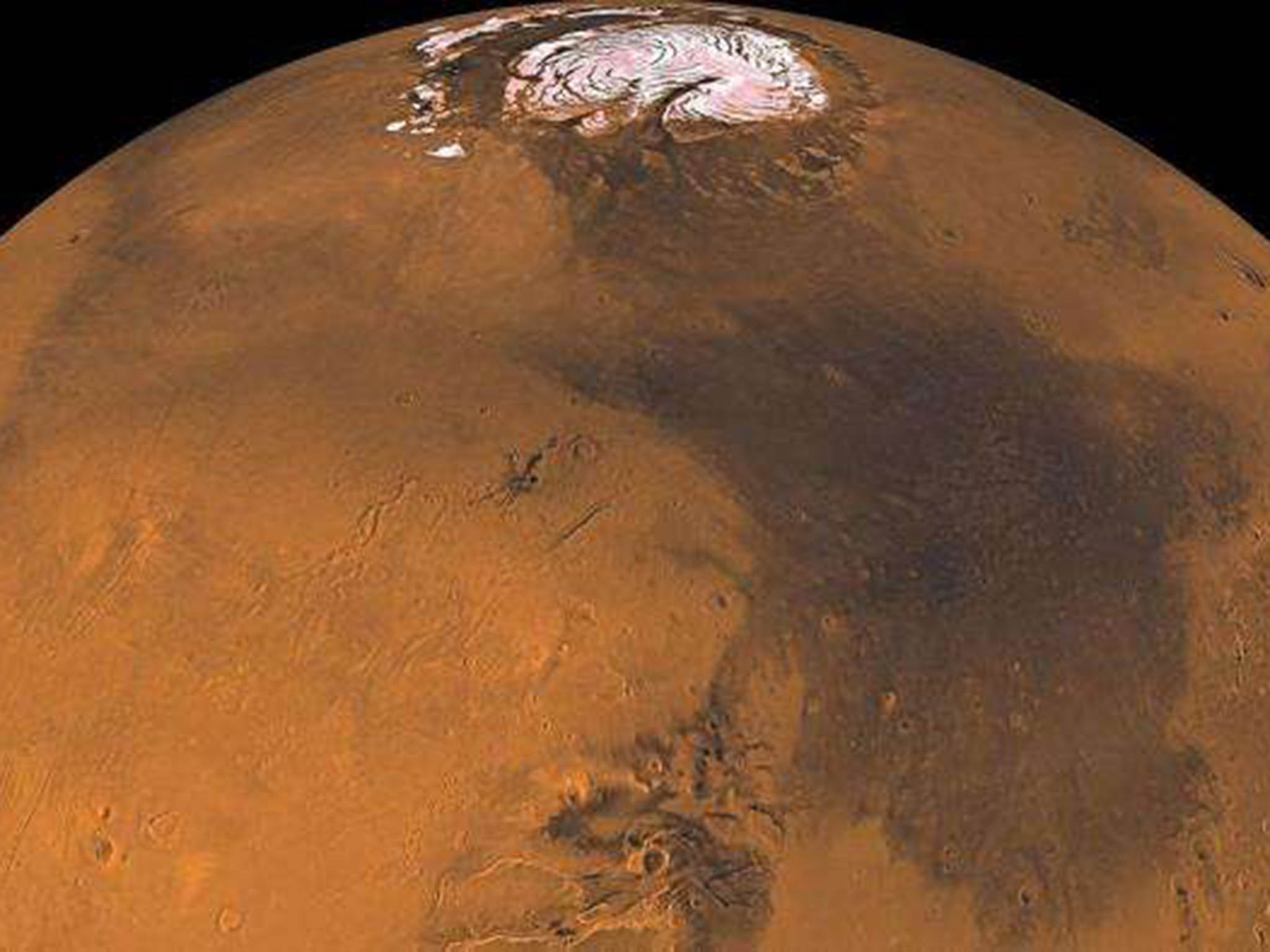Mars may have had one big moon instead of two small ones, Nasa study finds
Research finds large moon may have been ripped apart over time due to planet's gravity

Your support helps us to tell the story
From reproductive rights to climate change to Big Tech, The Independent is on the ground when the story is developing. Whether it's investigating the financials of Elon Musk's pro-Trump PAC or producing our latest documentary, 'The A Word', which shines a light on the American women fighting for reproductive rights, we know how important it is to parse out the facts from the messaging.
At such a critical moment in US history, we need reporters on the ground. Your donation allows us to keep sending journalists to speak to both sides of the story.
The Independent is trusted by Americans across the entire political spectrum. And unlike many other quality news outlets, we choose not to lock Americans out of our reporting and analysis with paywalls. We believe quality journalism should be available to everyone, paid for by those who can afford it.
Your support makes all the difference.Fresh research has revealed Mars could once have had one big moon instead of two smaller ones which will eventually form rings similar to Saturn.
The red planet currently has two small moons, Phobos and Deimos, but Purdue University scientists theorise at one point in the planet’s history there may have been just one considerably bigger satellite.
Part of a ring-satellite theory, authors of the study, David Minton and Andrew Hesselbrock, speculated a large moon may have ripped apart over time due to Mars’ gravity.
This would have formed a debris ring, similar to that orbiting Saturn, before clumping together again to form a moon and reverting back to scattered debris in a cyclical process over millions of years.
Each time a moon reformed it would have been five times smaller than the previous one.
All that is left from the initial large moon are the two current ones, they claim.
And Phobos is one of the few satellites in the solar system moving towards a planet, meaning eventually it too will be ripped apart and will likely form another ring.
Publishing their findings in Nature Geoscience, they claim an initial impact around 4.3billion years ago, which likely caused Mars’ biggest impact crater the North Polar Basin, would have expelled significant debris into the red planet’s orbit.
Mr Hesselbrock Science Daily reported said: "That large impact would have blasted enough material off the surface of Mars to form a ring."
This led to the creation of the large singular moon, which would have been slowly pulled towards Mars due to its gravity before hitting the Roche limit, the distant at which celestial bodies are ripped apart by gravitational forces.
The process would have continued over millennia until reaching the point we see today.
This theory is supported by the orbits of Phobos and Deimos, which are considered too circular to be captured asteroids, as these often have wild, elliptical orbits such as those taken hostage by Saturn.
Phobos is estimated to hit the Roche limit and break up in roughly 70 million years, with 20 per cent forming a new moon the remaining 70 per cent raining down on the planet’s surface in the form of dust and debris.
And if Hesselbrock and Minton’s theory is correct, it could explain the curious deposits discovered near Mars' equator.
The site quoted Mr Minton saying: "You could have had kilometer-thick piles of moon sediment raining down on Mars in the early parts of the planet's history, and there are enigmatic sedimentary deposits on Mars with no explanation as to how they got there.”
Join our commenting forum
Join thought-provoking conversations, follow other Independent readers and see their replies
Comments